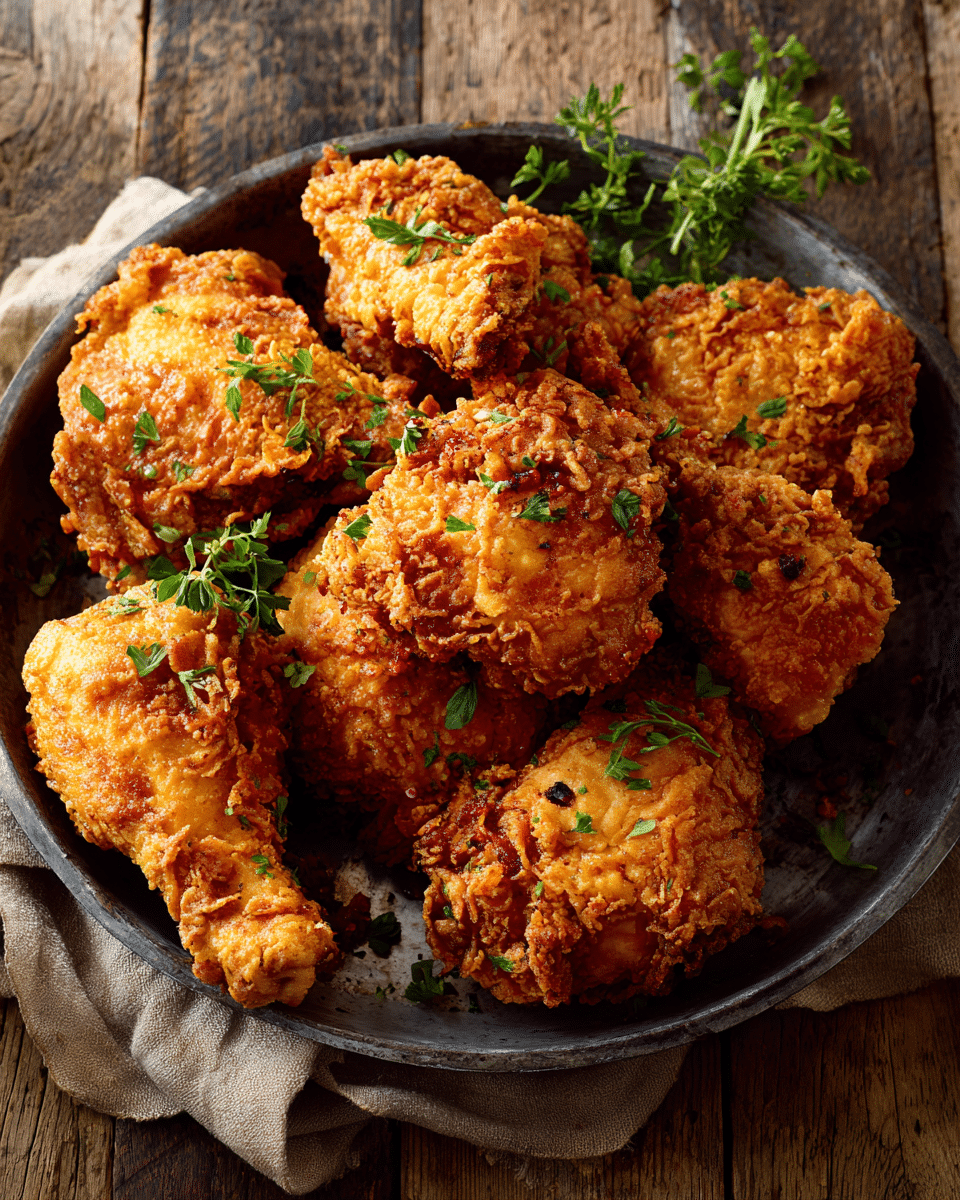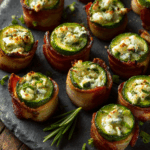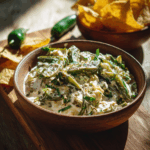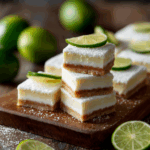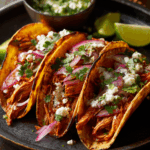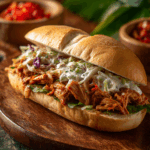Outdoor fried chicken is a beloved classic, especially popular for Labor Day cookouts and family gatherings. This recipe delivers perfectly crispy, golden skin with juicy, tender meat inside thanks to a seasoned flour coating and outdoor deep-frying. Cooking fried chicken outside helps keep your kitchen cool and fills the air with that irresistible aroma of crispy goodness.
FULL RECIPE
Ingredients
- 3 to 4 pounds bone-in, skin-on chicken pieces (thighs, drumsticks, breasts)
- 2 cups buttermilk
- 2 teaspoons salt, divided
- 1 teaspoon black pepper, divided
- 1 teaspoon paprika
- 1 teaspoon garlic powder
- 1 teaspoon onion powder
- 2 cups all-purpose flour
- Vegetable oil, for frying (enough to fill a large deep pot 3-4 inches deep)
Directions
- In a large bowl, combine the buttermilk with 1 teaspoon salt and 1/2 teaspoon pepper. Add the chicken pieces, ensuring they are fully submerged. Cover and refrigerate for at least 4 hours, preferably overnight, to tenderize and flavor the chicken.
- In a separate large bowl or shallow dish, mix the flour with the remaining salt, pepper, paprika, garlic powder, and onion powder.
- Remove the chicken pieces from the buttermilk, allowing excess to drip off. Dredge each piece thoroughly in the seasoned flour mixture, pressing lightly to coat well. Place coated pieces on a wire rack and let them rest for 10-15 minutes.
- Heat vegetable oil in a large, heavy pot or deep fryer outdoors to 350°F (175°C). Use a thermometer to monitor the temperature carefully.
- Fry the chicken pieces in batches, avoiding overcrowding, for 12-15 minutes per batch. Turn occasionally to ensure even browning and cook until the internal temperature reaches 165°F (74°C) and the coating is golden brown and crispy.
- Remove fried chicken from the oil and place on a wire rack or paper towels to drain excess oil.
- Let the chicken rest for 5 minutes before serving to lock in juices and maintain crispiness.
Nutrition Facts
- Calories: 380
- Total Fat: 22g
- Saturated Fat: 5g
- Cholesterol: 120mg
- Sodium: 720mg
- Total Carbohydrates: 15g
- Dietary Fiber: 1g
- Sugars: 1g
- Protein: 32g
- Vitamin A: 4% DV
- Vitamin C: 0% DV
- Calcium: 4% DV
- Iron: 8% DV
Key Factors for Perfect Crispy Skin
Achieving that perfect crispy skin is a combination of proper marinating, coating, and frying technique. Buttermilk marinade tenderizes the chicken while adding subtle tanginess, and the seasoned flour coating creates a crunchy crust. Maintaining the oil temperature between 350°F and 375°F is crucial; too hot, and the crust burns before the chicken cooks through, too low, and the coating absorbs oil and becomes greasy. Resting the chicken after dredging allows the flour to adhere better, enhancing the crispiness.
The Role of Buttermilk in Flavor and Texture
Buttermilk isn’t just a traditional choice; it plays an essential role in breaking down proteins in the chicken to produce tender meat. Its acidity gently tenderizes the flesh, ensuring that each bite is juicy and flavorful. The lactic acid in buttermilk also helps the seasoned flour stick better to the chicken, contributing to a more even, crunchy crust. This marinade step is a simple but transformative technique that elevates homemade fried chicken above ordinary.
Seasoning Blends That Enhance the Taste
A great fried chicken recipe balances savory, aromatic, and slightly spicy notes in its seasoning blend. Classic spices like paprika, garlic powder, onion powder, salt, and pepper deliver a familiar flavor profile that complements the richness of the fried coating. Many cooks experiment by adding cayenne pepper for heat or herbs like thyme and oregano for complexity. The seasoning in the flour mixture is where flavor begins to develop, so don’t be shy about seasoning generously.
Choosing the Best Chicken Cuts for Frying
While all cuts of chicken can be fried, bone-in, skin-on pieces like thighs, drumsticks, and breasts are ideal for outdoor fried chicken. The bone adds flavor and helps retain moisture during cooking, while the skin crisps up beautifully. Dark meat pieces tend to stay juicier and are often preferred for frying, though breasts offer leaner options. Choosing fresh, high-quality chicken will always result in a better final product, so consider sourcing from trusted suppliers.
Outdoor Frying Safety Tips
Frying outdoors is practical but requires caution. Always use a stable, heat-resistant surface away from flammable materials. Keep a thermometer handy to monitor oil temperature accurately. Never leave hot oil unattended, and have a fire extinguisher rated for grease fires nearby. Avoid overcrowding the pot, as this lowers oil temperature and causes uneven cooking. Following safety protocols ensures a fun and accident-free cooking experience.
Serving Suggestions and Traditional Sides
Fried chicken pairs wonderfully with classic sides that balance its richness. Creamy mashed potatoes, buttery corn on the cob, tangy coleslaw, and flaky biscuits are staple accompaniments. For a fresh contrast, a crisp green salad or pickled vegetables can cut through the heaviness. These sides create a well-rounded meal, adding variety and texture while complementing the savory notes of the chicken.
Pairing Drinks with Fried Chicken
When serving fried chicken, drink pairings can enhance the overall meal experience. Classic cold beer—whether a lager, pilsner, or pale ale—complements the dish’s saltiness and crunch. For non-alcoholic options, sweet iced tea or sparkling lemonade offers refreshing contrasts to the rich flavors. Wine lovers might choose a chilled sparkling wine or a fruity rosé to balance the fried elements with acidity and bubbles.
Leftover Storage and Reheating Tips
Proper storage and reheating of fried chicken can preserve its flavor and texture for later enjoyment. Store leftovers in an airtight container in the refrigerator within two hours of cooking. To retain crispiness, reheat chicken in a conventional oven or air fryer at 350°F for 10–15 minutes rather than microwaving, which tends to make the coating soggy. Leftover fried chicken can also be repurposed in sandwiches or salads for a tasty second meal.
Health Considerations and Moderation
While undeniably delicious, fried chicken is high in calories, fat, and sodium, making it an indulgent treat best enjoyed in moderation. For a healthier spin, consider using skinless pieces, baking instead of frying, or choosing air frying methods. Pairing fried chicken with plenty of vegetables or salads can help balance the meal. Being mindful of portion size and frequency allows you to savor this classic comfort food without overindulgence.
Advertisement
Conclusion
Outdoor fried chicken remains a beloved recipe that embodies the spirit of communal dining and casual celebration. Its crispy, flavorful crust and juicy meat make it a timeless favorite that’s as satisfying today as it was generations ago. By understanding the techniques behind the perfect fry and pairing it thoughtfully with sides and drinks, you can create memorable meals that bring friends and family together.

